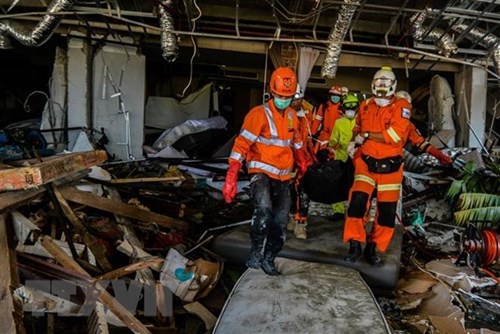BNPB spokesman Sutopo Purwo Nugroho stated that victims who have not been found are declared missing.
    |
 |
|
Rescuers searching for missing victims |
Some limited searching might still be undertaken but large-scale searches with many personnel and heavy equipment would cease, he added.
Central Sulawesi was ravaged by two devastating quakes measuring 6.1 and 7.5 on the Richter scale on September 28. The second was followed by giant tsunami waves on the afternoon of the same day, destroying thousands of houses and roads.
As of October 7 evening, the death toll climbed to 1,944, while more than 2,500 people are receiving treatment at hospitals and over 62,300 are forced to be evacuated.
Official sources said 683 remained missing and 152 others are believed to be still buried under ruins.
However, reports of authorities of Balaroa and Petobo, two localities adjacent to Palu, said around 5,000 are still unaccounted for. The figure has not been confirmed by official sources.
Indonesia’s Ministry of Social Affairs has announced that all residents of Central Sulawesi province suffering from the disaster will receive the government’s social aid of 10,000 rupiah per person for three months.
Each of the disaster-hit permanent residential families will also receive aid of 3 million rupiah, and the government will provide rehabilitation funds to those whose houses got damaged or destroyed by the quake and tsunami.
At least 5,100 buildings and houses were destroyed by the quakes and tsunami, with Palu the hardest hit.
Indonesia is frequently struck by earthquakes, volcanic eruptions and tsunamis because of its location on the "Ring of Fire", an arc of volcanoes and fault lines in the Pacific Basin.
A series of earthquakes in July and August killed nearly 500 people on the holiday island of Lombok, hundreds of kilometres southwest of Sulawesi.
In December 2004, a massive 9.1-magnitude earthquake off the northern Indonesian island of Sumatra triggered a tsunami across the Indian Ocean countries, killing 220,000 people in 13 countries, including more than 168,000 in Indonesia.
Source: VNA